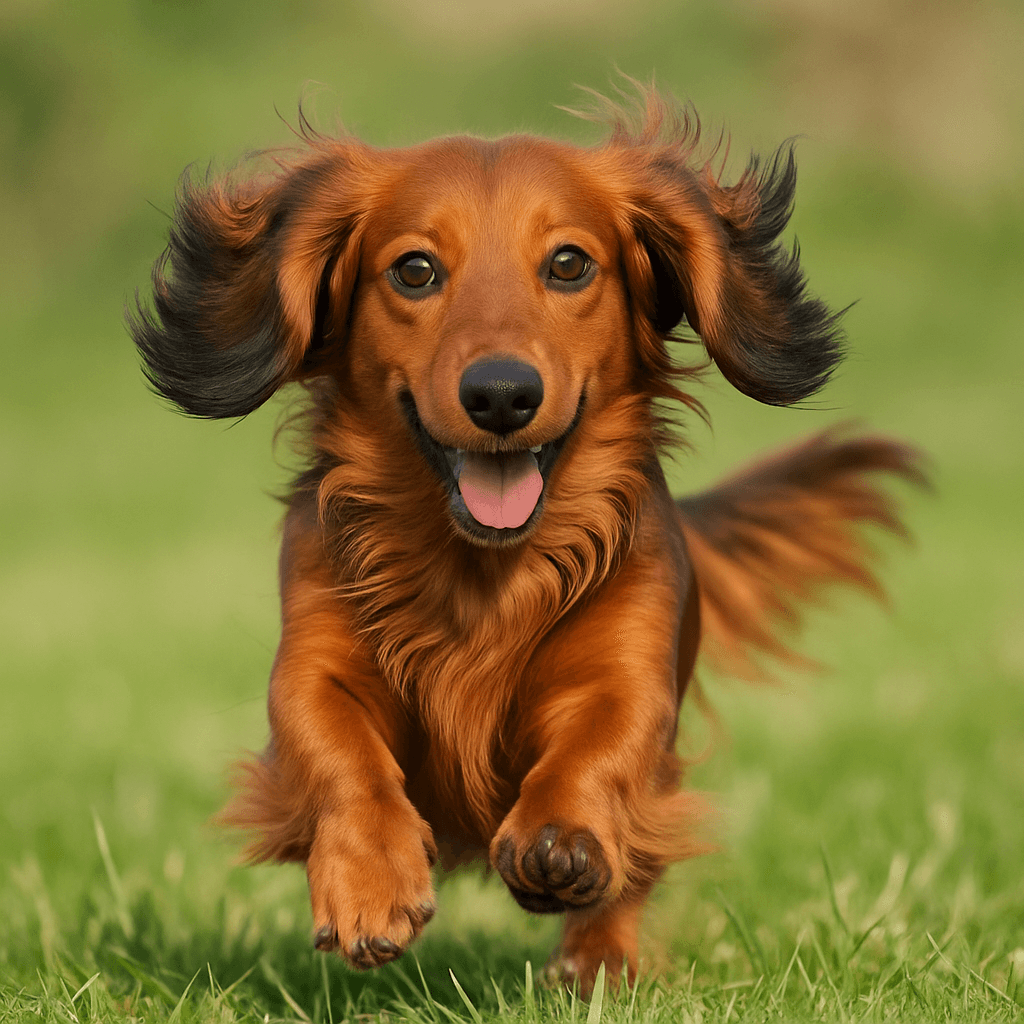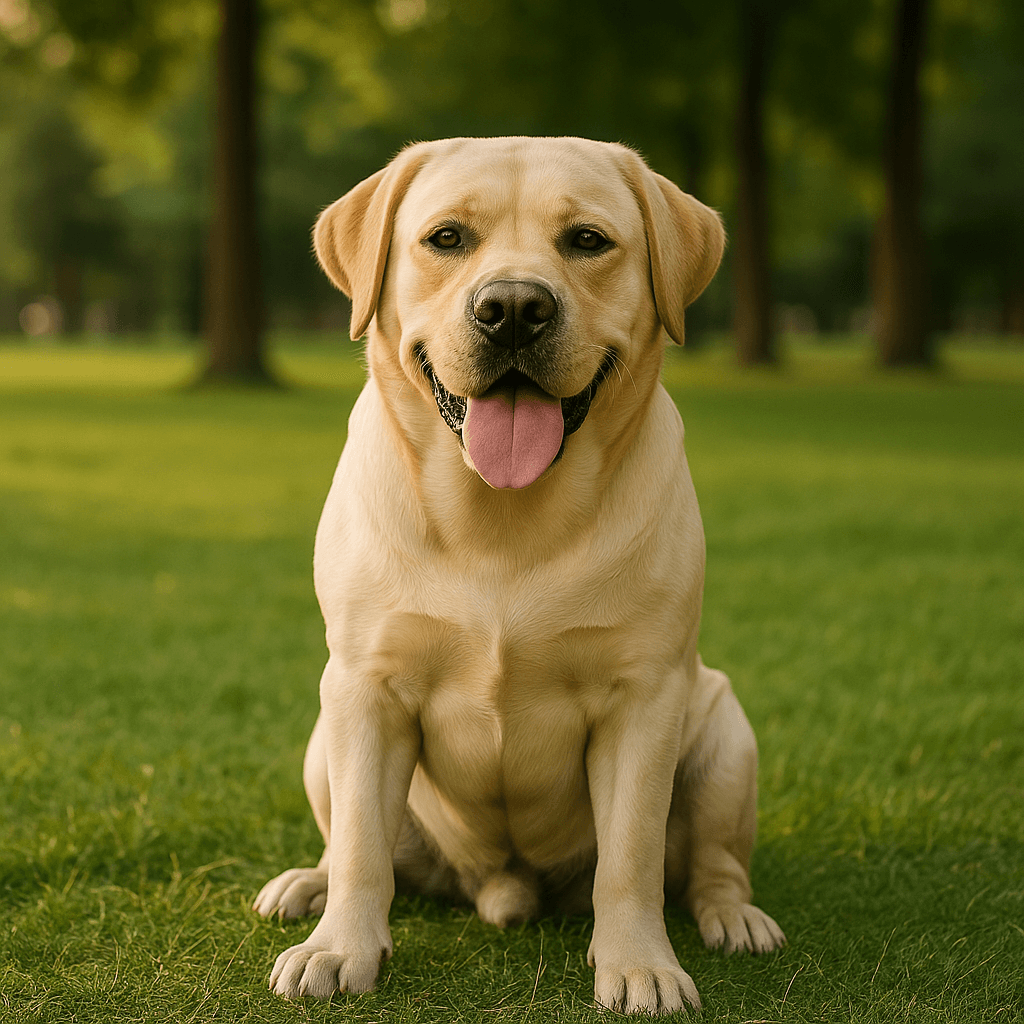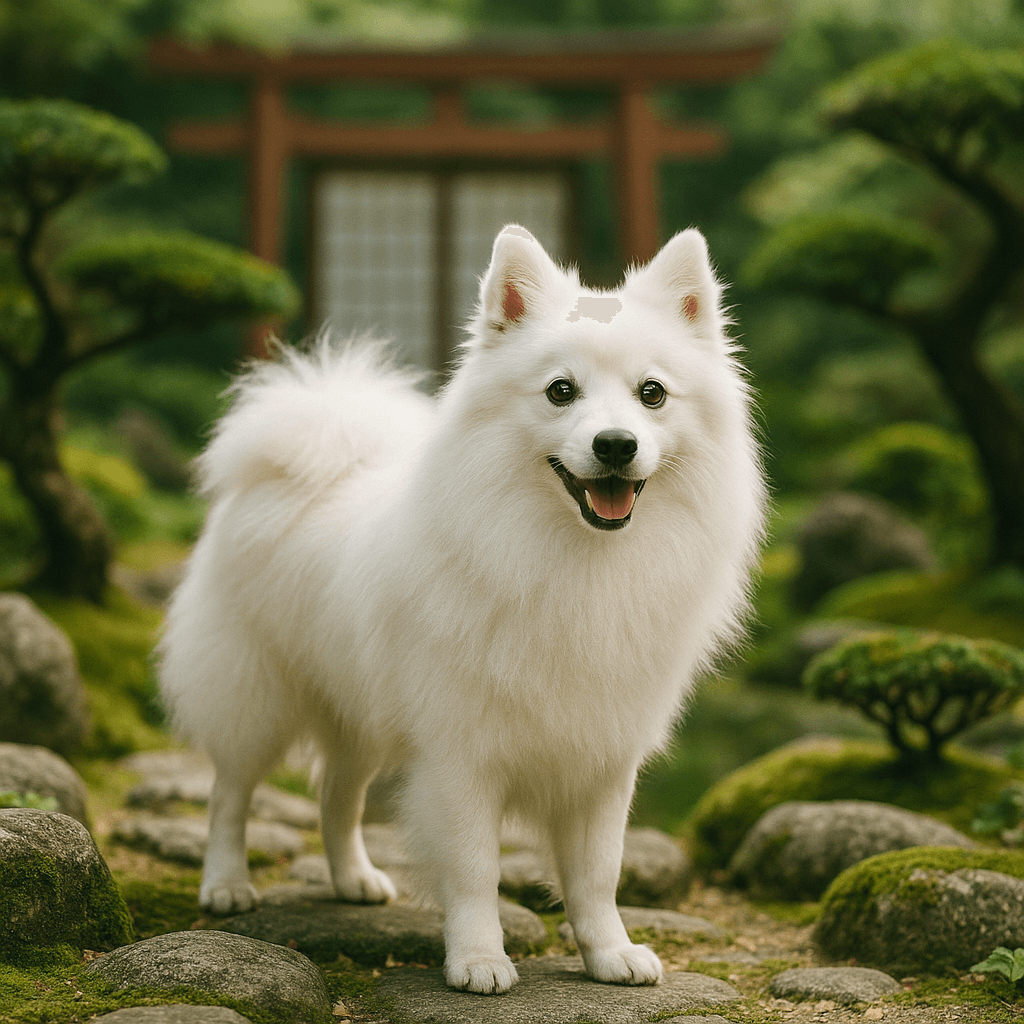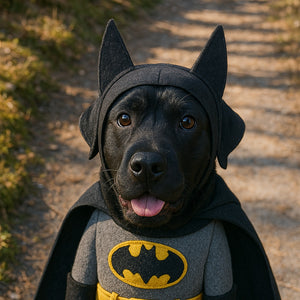
Rabbit dachshund – the smallest hunter in the world that will steal your heart!
Rabbit Dachshund - Meet the extraordinary burrow hunter and beloved family companion
Contents:
- The history and origin of the rabbit dachshund
- Appearance and characteristics
- Temperament and behavior
- Rabbit dachshund in the family
- Care and health
- Rabbit dachshund nutrition
- Activity and movement needs
- Rabbit dachshund and other animals
- Traveling with a dachshund – how to keep it safe
- Who is the rabbit dachshund for?
- Summary
1. History and origin of the rabbit dachshund
Dachshunds originate from Germany, where, as early as the Middle Ages, dogs were bred to hunt burrow-dwelling game—primarily badgers and foxes. The breed's name comes from the German word "Dachshund," literally meaning "badger dog." These dogs were known for their determination, short stature, and courage, making them ideal for working in the harsh underground conditions.
As hunting developed and hunting needs changed, breeders began to adapt the size of dachshunds to specific purposes. This led to the development of three basic varieties: the standard dachshund, the miniature dachshund, and the smallest of them all, the rabbit dachshund ( Teckel Kaninchen ). The rabbit dachshund was bred specifically for hunting rabbits, which inhabited particularly narrow and cramped burrows. Breeders selected the smallest individuals from the miniature litters, creating a distinct line characterized by even smaller stature and chest circumference.
The Rabbit Dachshund breed standard was officially recognized by the Fédération Cynologique Internationale (FCI) in the 20th century, allowing for the standardization of this breed and its popularization beyond Germany's borders. Initially found primarily in Western Europe, the Rabbit Dachshund has gradually gained worldwide recognition – both as a hunting dog and as a charming companion.
It's worth noting that dachshunds were also prized by European aristocratic courts. In the 19th century, Queen Victoria was particularly fond of them, having several dachshunds and promoting their breeding in the British Isles. Thanks to this influence, the breed quickly became fashionable among the bourgeoisie and intelligentsia. Today, the rabbit dachshund is rarely used for hunting; it serves more as a companion dog. However, its hunting heritage remains evident in its behavior, build, and character.
2. Appearance and characteristics
The Rabbit Dachshund is distinguished by its exceptionally compact build and low backline, giving it a unique, almost distinctive appearance. It is a well-proportioned dog that combines agility with strength despite its small size. Its body resembles an elongated rectangle, with a strong back, a broad chest, and short but muscular limbs.
Key physical characteristics:
- Height at the withers: approx. 12–15 cm
- Bust circumference: less than 30 cm
- Weight: 3–4 kg
Coat types:
Rabbit dachshunds come in three types of coat:

- Shorthair – the coat is close-fitting, smooth, shiny, and without an undercoat. It facilitates grooming but offers less protection against the cold.
- Longhair – soft, silky fur with longer hair on the ears, belly, and tail. It looks exceptionally elegant but requires regular brushing.
- Wirehaired – the coat is hard, with a characteristic "beard" and bushy eyebrows, providing protection from the elements. It requires periodic trimming.
Color:
It can come in a variety of colors. The most common are:

- Red (from light orange to mahogany)
- Black & Tan
- Chocolate
- Wilderness (dark shade mixed with black)
- Marbled (merle) – a striking pattern with irregular spots
Head and facial expression:
The dachshund's head is slightly elongated, with a strong muzzle and a prominent occiput. The eyes are oval, dark, and shiny, revealing intelligence and alertness. The ears are long, rounded at the tips, set quite low, and hang loosely down the sides of the head.
Silhouette and tail:
The body is well-muscled, with slightly arched ribs, providing ample lung capacity – extremely useful during intense hunting. The tail is medium-length, straight, and often carried parallel to the back or slightly curved downwards when at rest.
Despite its miniature size, the rabbit dachshund has an incredibly dignified appearance. Its gaze, posture, and gait reveal self-confidence and a commitment to independence.
3. Temperament and behavior
The dachshund is a dog with a surprisingly strong temperament packed into a small body. It is incredibly lively, bright, and inquisitive. It possesses a strongly developed hunting instinct, which manifests itself in its constant tracking of scents, digging in the garden, and a love of exploring every nook and cranny of the apartment or yard.
Main temperament features:
- Confident and feisty: despite its small size, the Rabbit Dachshund is not afraid of larger dogs and often shows its dominant nature.
- Independent but devoted: he can be stubborn and independent, but at the same time builds a strong bond with his caregiver.
- Smart and alert: it works great as an alarm dog – it reacts quickly to sounds and strangers, and barks frequently.
- Playful and energetic: loves playing games, fetching, tug of war and activities that engage his nose and mind.
This isn't a dog for everyone – the rabbit dachshund needs an owner who can combine affection with consistency. A lack of clearly defined boundaries can lead to the development of undesirable behaviors such as excessive barking, separation anxiety, or hyperactivity.
Despite their independent nature, the rabbit dachshund is extremely sociable and doesn't tolerate loneliness well. They need close human contact – they enjoy sleeping in bed, sitting on laps, and participating in the daily activities of their household.
This is a dog that will disarm you with its charm and boldness, but will also test your patience – for many owners, this combination is what makes it so special.
4. Rabbit dachshund in the family
The rabbit dachshund thrives in a home environment—whether it lives in a spacious house with a garden or a small apartment in the city center. Its small size and high intelligence allow it to quickly adapt to the rhythm of its owners' lives, although it requires time, commitment, and empathy.
For families with children:
Rabbit dachshunds can form strong bonds with children. They are playful, playful, and often initiate contact. However, their small bodies are delicate, so children should be taught to treat them gently and respectfully. These dogs don't enjoy being tugged or picked up, and they don't tolerate excessive intrusion into their space.
For older people:
Thanks to their sociable nature and need for closeness, the Rabbit Dachshund makes an excellent senior dog. They're happy to accompany you on leisurely walks, nap on the couch, and feel fulfilled in a quiet home. However, it's important to remember that they're still an active dog—they need daily mental and physical stimulation.
In relationships with household members:
The rabbit dachshund enjoys being the center of attention and often chooses "their human" in the home to whom they are most attached. They can be jealous of attention and require constant physical contact—they like to sleep close to people, crawl under the covers, and sit on laps. Some individuals can become overly clingy, requiring work on their emotional independence.
Rabbit dachshund and house rules:
Due to their stubborn nature, the rabbit dachshund needs clearly defined rules from puppyhood. If they aren't taught boundaries, they may try to dominate and control situations in the home—for example, defending the couch, resources, or their owner. Consistency and positive reinforcement are key to raising a well-balanced dog.
This is a dog that will fit perfectly into family life – as long as we devote the right amount of time, understanding and affection to it.
5. Care and health
Despite its charm and relatively small size, the rabbit dachshund requires proper care, both in terms of grooming and health. Proper care for its body and condition not only improves its appearance but also prevents many ailments to which this breed is particularly susceptible.
Coat care:
Depending on the coat type (short-haired, long-haired or wire-haired), care will be slightly different:
- The short-haired dachshund is the easiest to care for. Simply brush the coat once a week with a rubber brush or massage glove.
- Long-haired dachshund – requires daily brushing, especially around the ears, belly and tail, where the fur can become matted.
- Wire-haired Dachshund – requires periodic trimming (every 2–3 months) to maintain the proper structure of the coat and avoid excessive shedding.
Additionally, regular ear checks, nail trimming, and dental hygiene (brushing or dental chews) are the basis of daily care.
Health and prevention:
The rabbit dachshund, like any breed, has its own health issues. Due to its characteristic, elongated silhouette, it is prone to spinal problems, particularly disc herniation. The most common health issues include:
- Discopathy (diseases of the intervertebral discs)
- Obesity , which increases spine problems
- Periodontal disease – typical for small breeds
- Skin and food allergies
How to prevent:
- Keep your dog in good shape – the right weight is the key to a healthy spine
- Avoid jumping off sofas, stairs, or high surfaces – it is worth investing in a ramp or steps.
- Visit your vet regularly for check-ups
- Give supplements to support joints and coat (e.g. salmon oil, glucosamine)
Proper care and awareness of potential health problems will significantly extend the life of your rabbit dachshund and improve its everyday comfort.
6. Feeding the Rabbit Dachshund
A proper diet is crucial for the health and well-being of a rabbit dachshund. Due to its small size, tendency to gain weight, and risk of spinal problems, the food should be well-balanced, full of valuable nutrients, and appropriate for the dog's age and activity level.
Basic principles of nutrition:
- Regularity: feed your dog at regular times – preferably twice a day
- Portions adapted to weight and age: avoid overfeeding, as excess calories can lead to obesity and put strain on joints and the spine
- High-quality food: choose products rich in animal protein, low in fillers and grains
What should good karma contain?
- Animal protein – supports muscle development and regeneration
- Omega-3 and omega-6 fatty acids – have a beneficial effect on the coat, skin and joints
- Glucosamine and chondroitin – support the health of the musculoskeletal system
- Prebiotics and probiotics – support digestion and intestinal microflora
What to avoid?
- Foods with a high content of grains, artificial colors and preservatives
- Table scraps – fatty and spiced foods can cause digestive problems
- Excessive snacks – it is worth choosing healthy snacks, e.g. dried meat or vegetables
Wet or dry food?
Both wet and dry food have their advantages. Wet food contains more water, which can promote hydration, while dry food is more convenient and helps remove tartar. In many cases, a mixed diet, combining the benefits of both types, works best.
Additives and supplementation:
It is worth enriching your diet with natural supplements:
- Salmon oil – for healthy skin and coat
- Brewer's yeast - supports immunity and digestion
- Natural chews – help care for teeth and keep them busy
The nutrition of a rabbit dachshund should be treated as one of the pillars of its health - a proper diet not only prolongs its life, but also improves its quality on a daily basis.
7. Activity and physical needs
Despite its small size, it's a dog full of energy, curiosity, and a need to explore. It's not your typical couch potato—its hunting roots mean it needs daily physical and mental stimulation to feel happy and fulfilled.
Walks:
- At least 2–3 walks a day , each lasting at least 20–30 minutes.
- It is best if at least one of them is longer and allows the dog to freely explore the area (e.g. in a forest, meadow, park).
- Dachshunds love to sniff around – let him “read the news” from the lawn, it’s a very important form of stimulation.
Fun:
- Smell games – smell mat, looking for treats in the house or garden.
- Skill games – obstacle courses, tunnel, tug of war.
- Interactive toys – logic chews, puzzles with rewards.
Training:
Dachshunds are highly intelligent, but also stubborn. Short, regular training sessions (3–5 minutes) yield the best results. Positive reinforcement, such as treats, praise, and toys, is recommended. Recommended activities:
- Obedience – basic obedience
- Nosework – nose work, detecting odors
- Agility (mini version) – overcoming obstacles, tunnels, slalom
Limitations and caution:
Due to their predisposition to back problems, dachshunds should not be overworked or encouraged to jump excessively. Strenuous activity on hard surfaces should be avoided, and their weight should be monitored.
Tip:
Lack of exercise and boredom lead to frustration, barking, and destruction of household items in rabbit dachshunds. This is a dog that needs to be kept busy , but not necessarily running marathons – as long as it can fulfill its natural needs: sniffing, exploring, and interacting with its owner.
Balanced physical and mental activity is the best recipe for a healthy, calm and happy rabbit dachshund.
8. Rabbit dachshund and other animals
Despite its friendly appearance and compact size, the rabbit dachshund possesses a pronounced hunting instinct, which can influence its relationships with other animals. Socialization plays a key role here – the earlier a dachshund meets other dogs, cats, and small pets, the more easily it will accept their presence in its environment.
Dachshund and other dogs:
Rabbit dachshunds can be dominant, especially towards dogs of the same sex. Their courage and self-confidence often result in them attempting to subjugate other dogs—even those larger than themselves. However, with proper management, they can usually function as part of a pack, though not necessarily as "best friends."
Dachshund and cats:
Many dachshunds get along well with cats, especially if they grew up together. However, their chasing instincts can become more pronounced in new situations, so it's important to ensure safe initial encounters. A feline companion should have the opportunity to escape and have their own space.
Dachshund and rodents and birds:
Due to its hunting past, the rabbit dachshund may consider smaller animals as potential prey. It's difficult for it to suppress its instinct to chase rabbits, hamsters, or birds. If there are other small animals in the home, they should be properly secured and not left alone with the dog.
Socialization tips:
- Start socialization as early as possible – preferably when your dog is still a puppy.
- Provide your dog with calm, controlled interactions with a variety of animals.
- Don't punish your dachshund for showing interest - teach him to observe calmly and ignore stimuli
- Always be in control of the situation, especially when it comes to new pets.
Summary:
A rabbit dachshund can live harmoniously with other animals, but this relationship isn't automatic. It requires work, supervision, and patient guidance. Consistency, safety, and understanding its natural instincts are key.
9. Traveling with a dachshund – how to keep it safe
Traveling with a dog is not only a pleasure but also a responsibility to ensure its safety. Although small, the rabbit dachshund requires proper preparation, especially due to its sensitive spine and tendency to separation anxiety. Proper transportation, a calm atmosphere, and a familiar environment are the foundations of a successful trip.
The most important rules for safe transport of a dog:
- A dog should never be transported loose in a car – it is dangerous for both the dog and the driver.
- The best solution are specialized dog car seats that combine the functions of a bed, seat belt and carrier.
Why is a car seat the best choice for a rabbit dachshund?
Due to its build, dachshunds are susceptible to injury from sudden braking. A properly contoured seat:
- Protects the spine against overload
- Stabilizes the body while riding
- Prevents stress thanks to its raised walls and familiar scent
- Gives your dog the opportunity to observe the world through the window, which reduces boredom and anxiety
Transportation outside the car:
If you're traveling by public transportation or visiting public places, consider using a soft carrier or a backpack . It's important for your dog to be accustomed to being in an enclosed space from puppyhood.
Practical tips:
- Before traveling, take a short walk to let your dog relieve himself.
- Take care of ventilation, water and no drafts
- Never leave your dog alone in the car, even for a few minutes.
You can find more information about safety in the article: How to safely transport a dog in a car – a PETTO guide
Traveling with a dachshund can be a wonderful experience if you ensure proper comfort and safety. It's an investment in your pet's well-being and your peace of mind.
10. Who is the rabbit dachshund for?
This breed captivates with its personality and appearance, but it won't be perfect for everyone. Before deciding to adopt or purchase this charming dog, it's worth considering whether its temperament, needs, and requirements fit your lifestyle.
The ideal guardian for a rabbit dachshund:
- A consistent and patient person who can cope with his stubbornness and intelligence
- A family with school-age children who know how to respect the dog's space
- Seniors looking for a close companion for daily walks and shared moments
- Active people living in the city , who value frequent walks and contact with nature
- Dog lovers with character who appreciate loyalty but accept independence
Who is not a rabbit dachshund suitable for?
- For people who spend a lot of time away from home – dachshunds do not tolerate loneliness well.
- For families with very small children – does not like being tugged and may react nervously
- For owners who want a low-maintenance dog, a dachshund requires commitment.
- For people who don't like barking dogs - the dachshund can be loud and alert
Space and lifestyle:
A rabbit dachshund doesn't need a huge garden, but it does need a daily dose of exercise and play . They thrive in apartments as long as they can keep company and have their own routines. They're an "indoor" dog—they don't do well outside without supervision or contact with family.
11. Summary
The rabbit dachshund is a unique breed – not only because of its small size, but above all because of the enormous character packed into its small body. This dog can be an affectionate companion, an active partner in adventures, a vigilant guardian of the home, and a stubborn individual, all in one.
By choosing a rabbit dachshund, you gain a loyal and loving pet, but you must be prepared for the daily challenges of its temperament, need for exercise, consistent training, and health care. This is a dog that requires attention and patience, but it also reciprocates with a vengeance.
Thanks to its small size, it's perfect for both a small apartment and a house with a garden. Its adaptability and intelligence make it an excellent dog for singles, families with children, seniors, or active couples. The key is to understand its needs and be willing to share a life full of warmth, exercise, and interaction.
If you're looking for a dog that will be your companion through thick and thin, one that will fill your home with joy and turn walks into an adventure, the rabbit dachshund is a breed that definitely deserves your attention. It's a small dog with a huge heart and a unique personality.
Want to learn more about these breeds, see recommended products, or read practical tips? Visit our blog and store at petto.com.pl , where you'll find everything you need for you and your pet.
FAQ – Frequently Asked Questions
Is a rabbit dachshund suitable for apartment living?
Yes. The rabbit dachshund is small, quiet, and adapts well to apartment life—as long as you provide it with daily walks and playtime.
How much exercise does a rabbit dachshund need?
At least 2–3 walks a day, along with mental stimulation (sniffing games, learning commands). This is an active dog that gets bored easily.
Is a rabbit dachshund suitable for children?
Yes – but only if children handle them gently. They're a family dog that needs respect and peace.
How long does a rabbit dachshund live?
The average lifespan is 12–16 years. Proper diet, exercise, and veterinary care can significantly extend a dog's lifespan.
Does a rabbit dachshund bark a lot?
He is alert and may bark at noises or strangers. A well-behaved and busy dog barks less often.
What are the most common health problems in this breed?
Disc herniation, obesity, dental disease, and allergies. Prevention is key – proper diet, exercise, and veterinary monitoring.
Can a rabbit dachshund travel by car?
Yes – as long as they use a safe car seat or carrier. Check out our collection of dog seats .
How much does a rabbit dachshund cost?
The price depends on the breed and pedigree – usually between 2,500 and 5,000 PLN. It's important to buy from registered, ethical breeders.
Source: FCI – Dachshund breed standard
See more at: Petto.com.pl












































 https://petto.com.pl
https://petto.com.pl